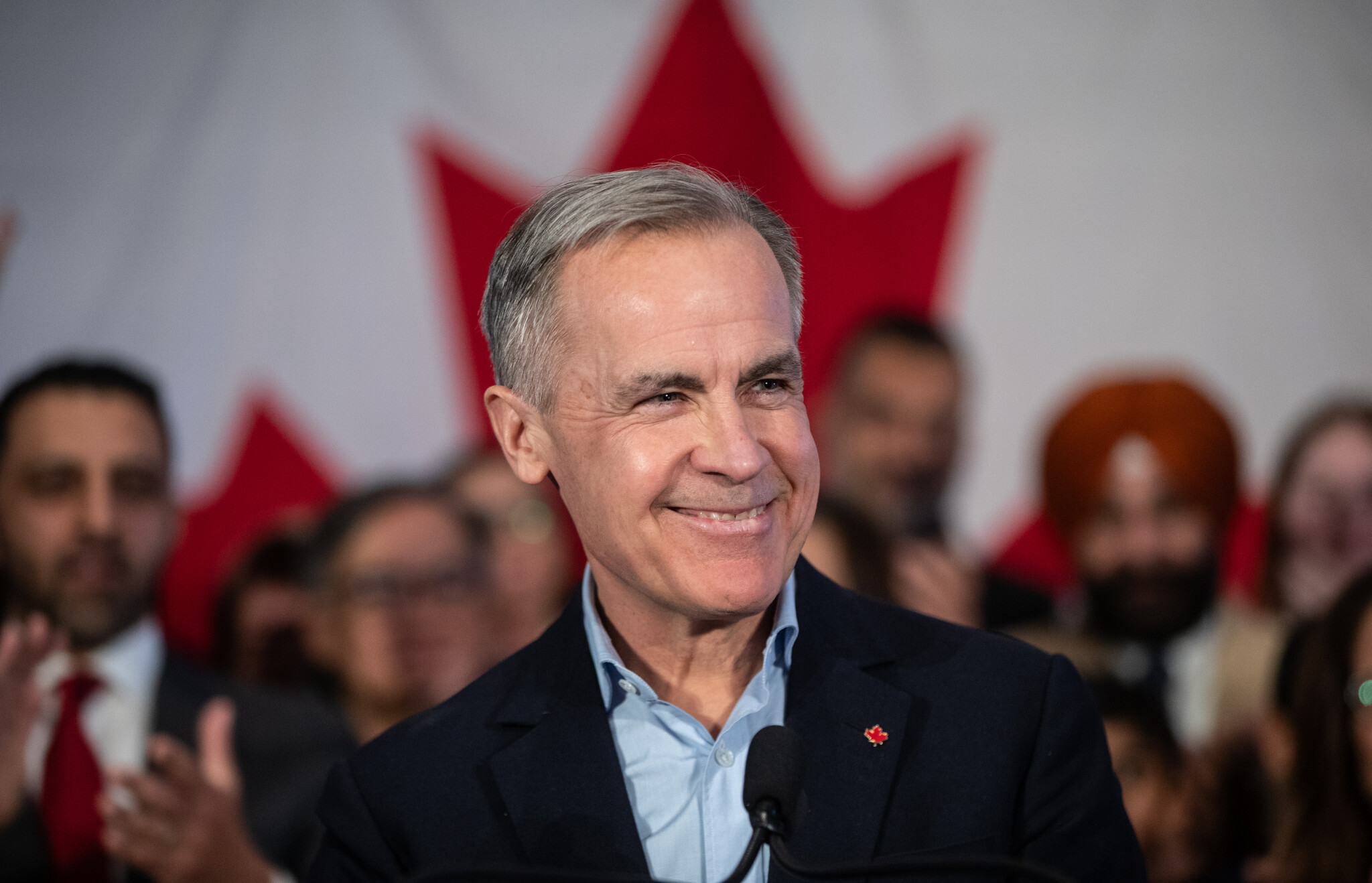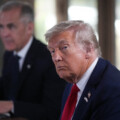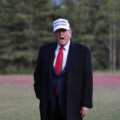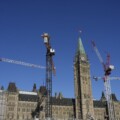And just like that, Canada’s long-awaited, much-analyzed federal election has come and gone. The still-somewhat-smoky scene this morning reveals a much different political landscape, with Mark Carney’s Liberals holding onto a minority (we think) government, the Conservatives growing their support and gaining key seats (though losing one particularly important one), and the NDP nearly wiped off the electoral map and losing official party status altogether.
What does this all mean for Canada? And what happens next? To sort through these obvious questions, we’ve gathered some of The Hub’s top insiders and experts to offer their insights and analysis for you.
In the end, Canadians chose stability over disruption
By David Coletto, founder, chair, and CEO of Abacus Data
This election was always about two competing ballot questions: Donald Trump and the desire for change. Canadians were pulled between the precarity created by external threats and frustration with the status quo at home. In the end, a slim plurality prioritized stability over disruption, giving Mark Carney and the Liberals a fourth mandate—though only a minority.
The campaign reinforced just how divided the country has become: regionally, generationally, and economically. That division won’t vanish overnight. The central challenge facing the Carney government is to offer Canadians the stability they seek, the strength to deal with Trump’s disruptive presidency, and the vision to keep the country united at a time of profound precarity.
Voters sent a clear message: manage the chaos abroad, but don’t forget the real pain at home. If the government loses focus—on affordability, housing, and interprovincial trade—it risks deepening those divides.
This wasn’t just a choice about a government. It was a choice about the kind of country Canadians want to live in during uncertain times and where the focus should be.
The NDP fails upward
By Royce Koop, professor of political science at the University of Manitoba
The 2025 election results are full of contradictions. The central issue of the campaign was the allegedly existential threat of Donald Trump and the Americans—but that threat against which we were all supposed to rally didn’t even result in a clear majority government for Mark Carney and the Liberals. The Conservatives boosted their vote and seat shares and performed well above expectations in Ontario—but Pierre Poilievre lost his own Ottawa-area seat.
And, despite that the two main parties won roughly 85 percent of the vote between them, minor parties will continue to wield significant power in the coming Parliament.
Which brings us to the NDP. The party was shellacked under the leadership of Jagmeet Singh, scoring its worst outcome in modern history. The party will limp into Parliament with only seven MPs and will be deprived of official party status.
But the breakdown of seats empowers those seven MPs. With only 168 seats, the Liberals will have to turn to one of the opposition parties to pass legislation. As in the last Parliament, that’s most likely to be the NDP rather than the bullish CPC or antagonistic Bloc. And the Tories and Bloc cannot bring down Carney’s government without the NDP signing on.
All this sounds like great news for Carney. In the short term, the current situation will give his new government some stability as the NDP selects a new leader and Poilievre finds his way back into the House of Commons. But beyond that little grace period, Carney may find it very difficult to satisfy the new merry band of New Democrats, for three reasons.
First, there is some likelihood that the party will distance itself from Singh’s wishy-washy negotiating style. The former leader talked a good game but, without exception, backed down when it came time to defeat Justin Trudeau’s government, with disastrous consequences for his party. The new party and leader may, as a result, be tougher customers.
Second, there’s really nowhere else for the NDP to go than up. We are likely looking at the party’s floor, the seven seats the NDP can almost always win through a combination of focusing their resources and relying on strong incumbent MPs. The new NDP can credibly threaten to defeat the Liberals without worrying about being wiped off the map. The party can afford to be daring.
Finally, the NDP’s new anaemic caucus counts among its ranks some of the most strident left-wingers in the parliamentary party. They may well drive a much harder bargain than Singh ever did.
But Carney will have to meet their demands if he wants his government to have any staying power whatsoever. Those seven MPs, if they show some spine early on, could find themselves calling the shots.
With very substantial consequences for the future of this country. Any dwindling hope that Carney—the respectable economist—would govern in a fiscally responsible manner are now well and truly gone. The NDP rump will drag him to the Left. Both spending and the deficit will continue to grow. All of the problems that tanked Trudeau will, very quickly, afflict Carney as well. And the Conservatives will ultimately benefit.
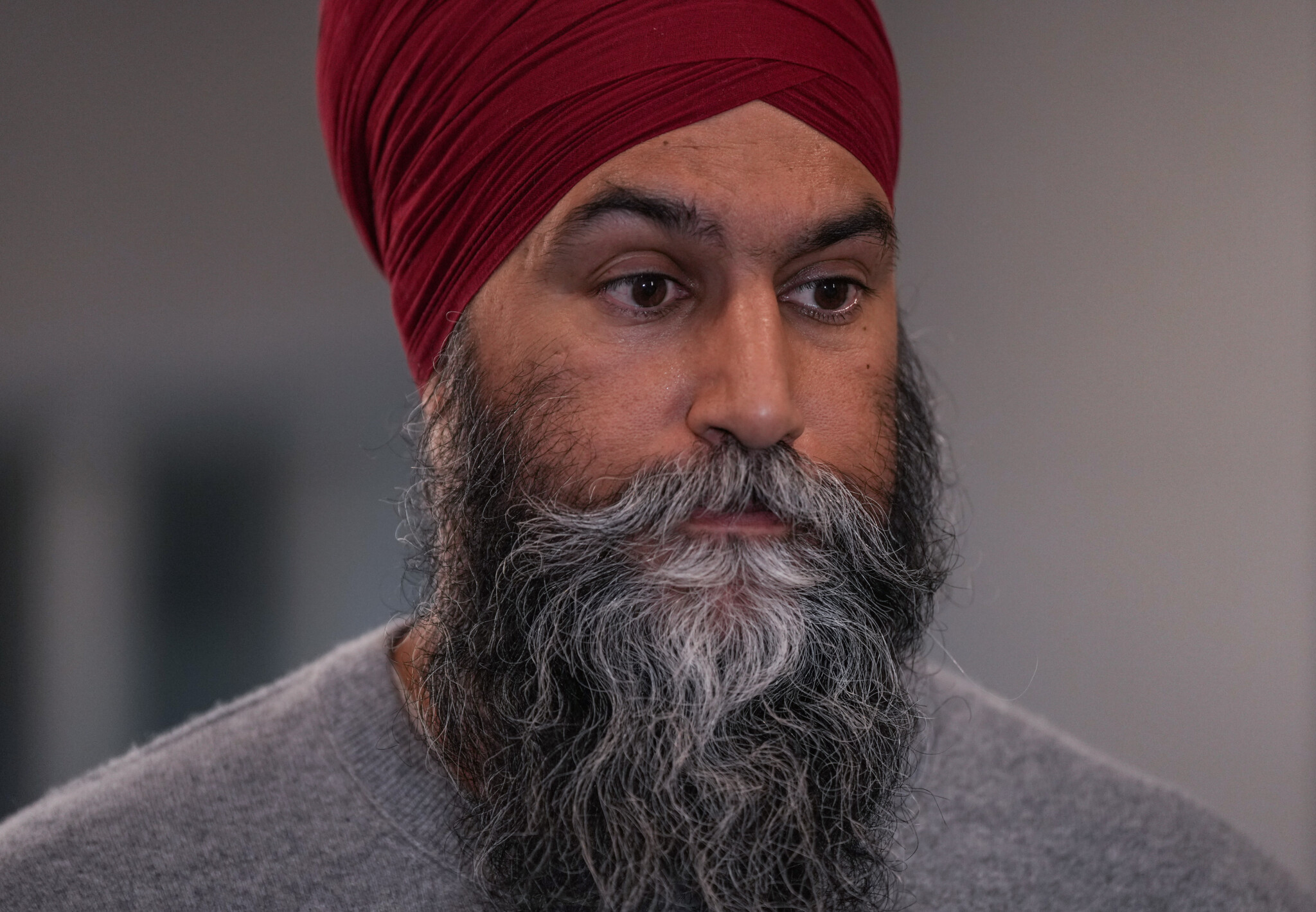
NDP Leader Jagmeet Singh during a news conference in Burnaby, B.C., on Saturday, April 26, 2025. Darryl Dyck/The Canadian Press.
Jamil Jivani said what needed saying
By Kelden Formosa, a political commentator and elementary school teacher in Calgary
Jamil Jivani’s broadside against Doug Ford as the results came in last night was cathartic for many Conservatives, and it offers a glimpse of a better communication strategy for the party.
First, it was honest. People who followed the campaign closely noticed that almost every time the Conservatives had a good news day, it was followed by a negative leak from lobbyists or consultants connected to the Ontario Premier’s office. Not only did Ford not endorse the federal Conservatives, his team sabotaged their campaign, all while cozying up to Mark Carney and the Liberal Party.
Second, it was smart. Jivani made the point that even though he and Ford were both on “the Right” in some sense or another, he didn’t think Ford was actually doing a very good job governing Ontario. A weak economy, high housing prices, an increasingly ideological and ineffective education system—the province may as well be governed by a Liberal who doesn’t like bike lanes. That’s a complex critique expressing a genuine thought, one not well expressed in one of the several three-word slogans in which Conservatives have learned to speak.
Third, it was open. The whole campaign, the official Conservative Party was evasive and hostile to the media. They came up with some nonsense excuse for not taking many questions from mainstream journalists and kicking journalists off the bus. I get it—Canada’s media is biased and compromised by state subsidies. Oh well. You can’t just stop talking to them; that’s where Boomers get their news. Instead, do as Jivani did: talk to the media, say something interesting, and trust that listeners are smart enough to take it in stride.
While I come down on the Poilievre side of his people’s war with Ford, it’s worth remembering that they are also the ones who forced many of their local candidates to run somewhat mealy-mouthed, dumb, and closed-off campaigns. They didn’t need to, and they shouldn’t anymore. In the upcoming Parliament, give us a federal Conservative caucus—and a new and improved Poilievre as leader—that commits to being forthright, smart, and open to discussion with all comers, including journalists. That will make for a better opposition and a more credible government in waiting.
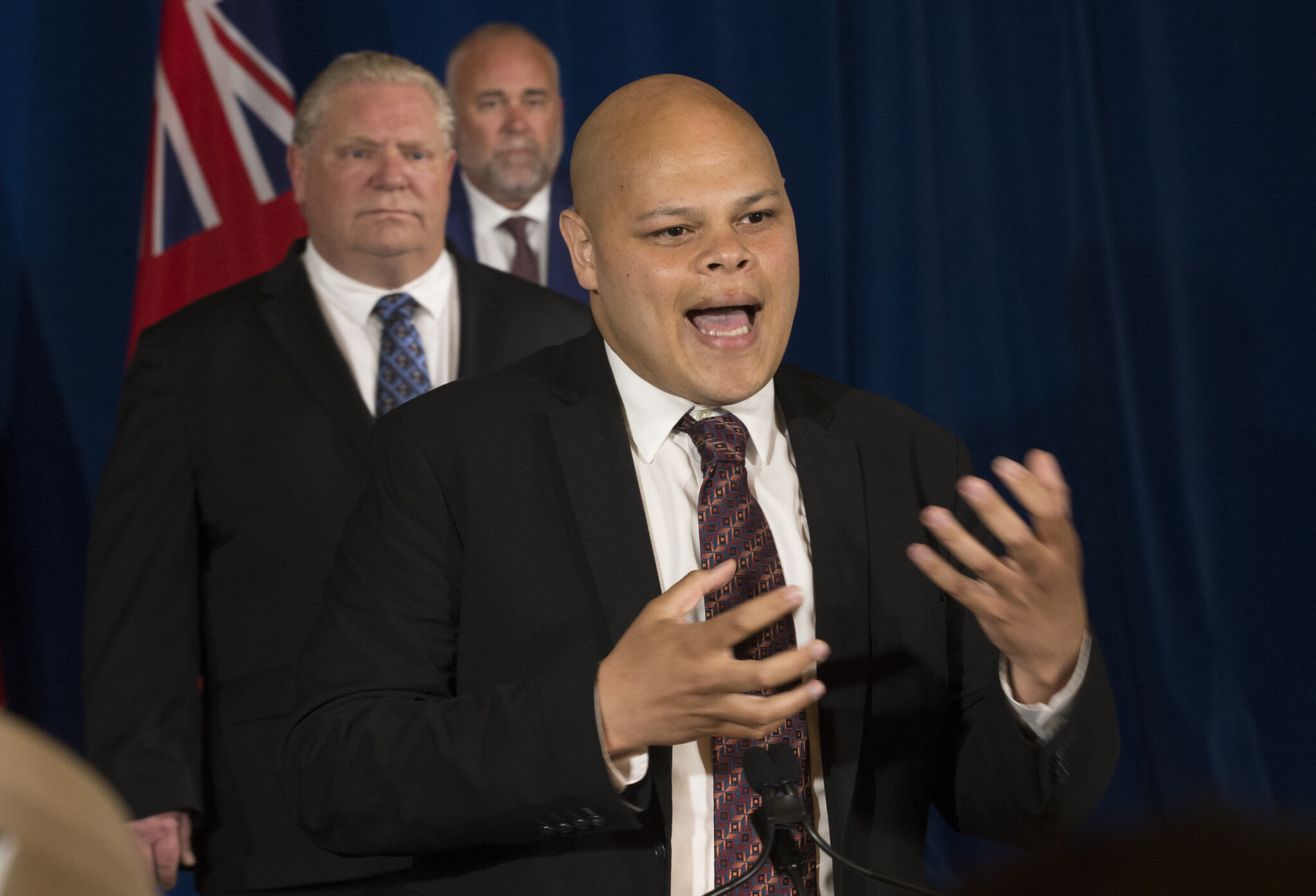
Jamil Jivani speaks as Ontario Premier Doug Ford, left, and Minister of Children, Community and Social Services Todd Smith listens in Toronto on Thursday, June 4, 2020. Rick Madonik/The Canadian Press.
Mark Carney has won power—what will he do with it?
By Jamie Ellerton, founder and principal at Conaptus
Canada today is quite divided, and it is not as simple to boil it down to partisan stripes. The past four months of political upheaval are a wake-up call for leaders in Ottawa to check their priors to reimagine a new path forward for Canada that builds a more united country.
Canadians wanted change. Far too many are struggling to make ends meet. Canadians also have real apprehension for what tomorrow holds with U.S. actions upending a prosperous continental alliance that looks set to reverberate for many years to come.
Pierre Poilievre both grew the Conservative Party vote total to new heights and put into motion political forces that led to the greatest consolidation of the centre-left and progressive voter coalition into the Liberal Party in our lifetime.
Today, predicting how Prime Minister Carney’s government will act is akin to engaging in tarot card readings. So far, all Carney has really done as prime minister is set an election frame that just won the Liberals an election. His critics and Conservative partisans clearly underestimated him.
For Carney, his CV and perceived strength as an economic manager will need to be earned every day over the life of this Parliament.
The last Parliament saw the NDP effectively run the table, leading to increases in spending and government programs. If the current minority Parliament composition holds, it is wildly unpredictable to chart a sure path for what our next election will be about and when.
Both Prime Minister Carney and Pierre Polievre have the ability to move quickly to enact real structural reform to attract greater investment into Canada, to create a more responsibly permissive regulatory framework, and to build the next generation of Canadian prosperity. A temporary consensus on these key issues can pay dividends for a generation of new prosperity. That is a minority Parliament that the vast majority of Canadians can get behind.
What about a unity government?
By Eric Lombardi, founder and president of More Neighbours Toronto
Congratulations to Mark Carney on his election win. Despite our divisions, Canadians can be proud: our democracy remains strong—and this time, its voters demanded cooperation over domination of a majority government. We should listen to their wisdom.
The results brought real surprises. Conservatives outperformed expectations, with surprising vote efficiency in holding the Liberals to a minority. Yet Pierre Poilievre lost his seat—and it is hard to see how he remains Opposition leader without getting a new one soon. Most importantly, the worst outcome in my view—a Liberal minority propped up by the Bloc—was avoided. That alone is cause for optimism.
But we should be clear-eyed about the result. The collapse of the NDP was driven not by enthusiasm for Carney but fear of Poilievre. Conservatives would do well to understand that the nasty strain of conspiratorial populism that dominates a minority of their base is a serious liability with the broader public. It repels far more voters than it attracts. A more moderately disposed leader likely would have won.
The turnaround in expectations from just a few months ago should also be a wake-up call. Conservatives cannot continue with a strategy of paranoia toward the media, refusal to debate, and avoidance of challenging interviews. Canadians expect confidence, not grievance, from a party seeking to govern. Therein lies an opportunity.
Conservatives face a choice. They can default to a snarky opposition, or they can prove they are ready to govern. They should extend a two-year olive branch: free votes or conditional support for the government tied to a serious centre-right unity and reform agenda. Despite losing seats, the combined Liberal and NDP caucus still holds a majority—Conservatives should give Carney an alternate path.
A temporary unity government between Liberals and Conservatives could drive historic reforms: getting a deal done with provinces on housing, doing tax reform, and accelerating project permitting. At a time of mounting threats to Canada’s prosperity and security, the country deserves more than gridlock and better than more of the same Liberal-New Democrat governing coalition. The ball may be in the Conservative court, if they’re willing to play.
Here comes the hard part, Carney
By Spencer Fernando, a Canadian writer and political commentator
Prime Minister Mark Carney and the Liberals have completed an incredible political comeback. From 25 points down at the start of the year, the Liberals finished just three seats short of a majority, and won the largest share of the popular vote since 1984.
The Liberal campaign proved adept at harnessing patriotic symbolism, adjusting to Donald Trump’s ongoing outbursts, and jettisoning unpopular policies.
Now, the hard part begins.
The Conservatives finished close behind in seats and vote share, indicating many wanted a different direction. The threat from the United States remains. Recession fears are mounting. Difficult decisions lie ahead.
That said, there are reasons for optimism. This was one of the least negative campaigns in years. There is a widespread consensus on the challenges facing Canada. Carney, Pierre Poilievre, Jagmeet Singh, and even Yves-François Blanchet said all the right things on election night. Now, the task for all of us is to turn those unifying words into unifying actions.
In this time of crisis, Canadians are looking for a pragmatic, conciliatory, and open-minded approach to governance that listens to the best ideas from across the political spectrum. Will the government deliver?
